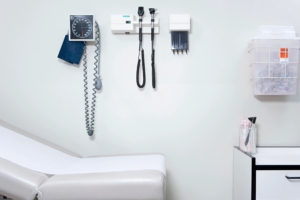The role of professional guidance in care transitions, such as moving an aging family member from a rehabilitation facility back to their home, can present numerous challenges for everyone involved. It can be a time of significant changes. Changes for the patient but also for family caregivers carrying the responsibility of having a smooth transition. The importance of professional guidance during these times cannot be overstated. The role of a nurse patient advocate can help guide the way and assist you in avoiding potential errors in care.
Personal Story of Professional Guidance in a Successful Transition
Consider the story of Edith. This video from our recent Tuesday Tips shares the story of Edith who fell at home, and it is her journey through a few transitions in care and illustrates what could have gone wrong as well as what went right.
Expert Insights on the Importance of Professional Guidance
When it comes to care transitions, having expert guidance can make a world of difference. According to Dr. Anna Taylor, a geriatric care specialist, “A well-planned care transition can mean the difference between a patient thriving at home or experiencing setbacks. Professional guidance ensures a smooth, safe, and effective transition for all involved.” Additionally, Sarah Jenkins, a Care Transition Coordinator, emphasizes that “Family caregivers often find themselves overwhelmed with the responsibility of managing their loved one’s healthcare needs. Seeking professional guidance during care transitions can provide the support and knowledge necessary for successful home care.”
Michael Garcia, a social worker and elder care advocate, further highlights, “The role of professional guidance in care transitions cannot be overstated. It not only ensures that the patient’s medical needs are met but also supports the emotional and logistical needs of both the patient and their family.”
The Role of Professional Guidance in Care Transitions
Medical Support
Professional guidance during care transitions includes comprehensive medical support. This covers everything from understanding the care plan, including medications and therapies, to ensuring that any required medical equipment is properly set up at home. This medical oversight is crucial for preventing complications and promoting the patient’s recovery.
Nurse advocates can support transitions of care in several ways making sure:
- medications are correct and communicated during all transitions.
- any equipment needs are communicated and in the home prior to the return home. that any supportive services such as home care are ordered, and the agency is prepared to begin services.
- the family’s emotional needs are met, and they are prepared for their loved one to return home.
- we can also ensure that a backup plan is in place if the transition doesn’t go as planned.
- any treatment plans such as wound care or tube feedings are followed and care education received.
Emotional Support
Care transitions can be emotionally taxing for both patients and caregivers. Professional guidance helps to alleviate some of this stress by providing emotional support and reassurance. By having someone knowledgeable to lean on, families can feel more confident and less isolated during this challenging time.

Logistical Support
Logistics play a significant role in care transitions. Professional guidance provides the necessary tools and strategies to manage these logistics efficiently, from organizing transportation to scheduling follow-up appointments and care. This support ensures that nothing falls through the cracks, making the transition process seamless.
Actionable Advice for Caregivers and Patients
- Start Planning Early: Communicate openly with your healthcare team about the transition process to ensure everyone is on the same page.
- Understand the Care Plan: Familiarize yourself with medications, therapies, and any required equipment to facilitate a smooth transition.
3. Prepare Questions and Concerns: Make a list of questions and concerns to discuss with your healthcare provider or care transition specialist.
4. Create a Support Network: Include family, friends, and professional caregivers in your support network to assist with the transition care.
- Consider Home Modifications: Assess if any home modifications or support services are necessary for a safe and comfortable transition back home.
- Stay Organized: Keep track of medical records, important contacts, and a schedule of follow-up appointments and care. Consider preparing our Emergency To Go Folder checklist.

Conclusion
Professional guidance plays a crucial role in care transitions, offering essential medical, emotional, and logistical support. By engaging experts early in the process, caregivers and patients can ensure a smoother transition and better outcomes. Remember, you don’t have to do it alone—professional guidance can make all the difference in navigating the complexities of elder care and care transitions. Start planning today for a successful transition tomorrow. Consider arranging a free 30-minute consultation with Pam or Linda to get your questions answered.
We hope this story has been able to bring you an idea of how a nurse advocate can assist with a smooth transition to the next level of care.
Take care and we will see you back here soon,
Pam and Linda
Your Nurse Advocates
“Compassionate Care for Aging Adults and Peace of Mind for Adult Children”
Resources:
https://psnet.ahrq.gov/primer/inpatient-transitions-care-challenges-and-safety-practices
Your Nurse Advocate Consulting Free Resources
https://www.ahrq.gov/patient-safety/settings/ambulatory/tools/safetransitions.html





